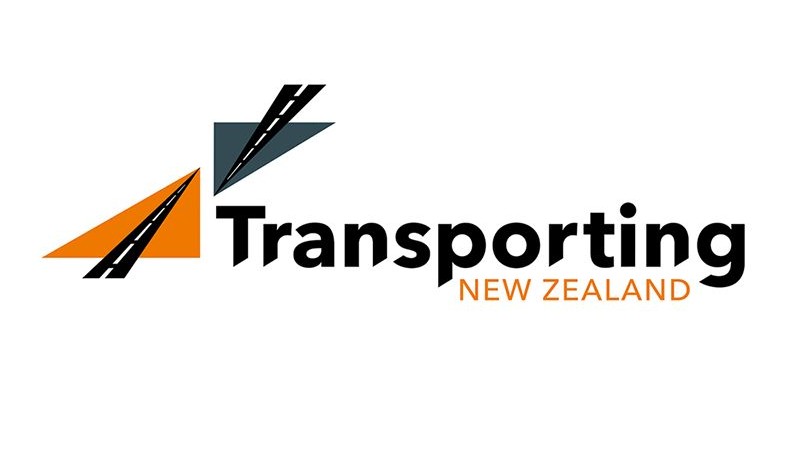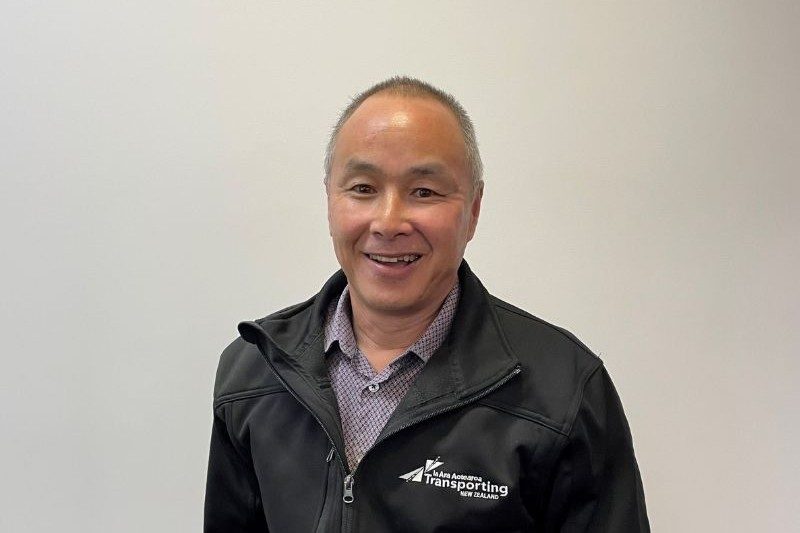The Road Ahead Conference 2022

Transporting New Zealand’s The Road Ahead conference looked at what is next for New Zealand’s transport operators as the world continues its recovery from the Covid-19 pandemic. The conference focused on a changing workforce, sustainability and environmental requirements, future fuel sources, supply chain issues, and disruptors such as the digital revolution. This month, we hear from Nicole Rosie, chief executive at Waka Kotahi NZ Transport Agency, Neil Walker, national manager, maintenance and operations at Waka Kotahi, and a panel discussion featuring Waka Kotahi’s Dylan Hunt, WorkSafe’s James Law, and CVST’s Mike Brooklands.
 Nicole Rosie
Nicole Rosie
Waka Kotahi NZ Transport Agency
Rosie said the events of the last few years would help the transport sector prepare for future disruptions.
“We have lots of things that are changing in our world, and we’ve been very, very disrupted,” she said.
“The events of the last few years have taught us a few lessons about the nature of change, the nature of resilience, and these lessons I think will come in handy as we prepare and respond to the major issues taking place, many of which are actually bigger than Covid, such as climate change management, funding challenges, refinements to our regulatory processes, and various other things that have the potential to affect the way each of us organises and operates within the land transport system.”
Rosie said Waka Kotahi was required to achieve multiple outcomes, many of which were competing outcomes.
“It’s a complex environment that we have to develop over long periods of time. Instead of looking at a 10-year horizon, we now have to look 30 years ahead in transport planning,” she said.
“It requires us to think very hard about multiple outcomes, not just for this generation but future generations to come.”
NLTP
The National Land Transport Programme is Waka Kotahi’s blueprint for the next three years of activities across New Zealand’s land transport system and network.
“Every region in New Zealand comes up with a 10- and 20-year regional transport plan that prioritises projects for the region, and this goes into a prioritisation process where Waka Kotahi determines where funding is allocated, based on the highest return to those communities in New Zealand,” Rosie said.
“As you well know, the picture for the network is one of increasing demand in the face of limited funding. We’re being upfront about our funding issues, our funding model, which is based on fuel and road travel. Support from central government for big projects has worked well for some time, but now it doesn’t.”
The government provided Waka Kotahi with an extra $2 billion in debt financing through the NLTP and was currently reviewing the agency’s funding arrangements.
“It is an opportunity to rethink how we pay for our land transport system into the future,” Rosie said. “Nothing is off the table, including road pricing, a regulated asset model, increasing fuel, excise and road-user charges and flat vehicle- kilometre charging.
“There are lots of options being discussed. It’s important that those who use the system and contribute to the wear and tear of their network pay for it.”
 Neil Walker
Neil Walker
National manager, maintenance and operations at Waka Kotahi
Climate change will have a huge impact on how Waka Kotahi delivers its work, according to Walker.
He said a greater level of investment and attention on both resilience and maintenance of the road network was needed.
“We definitely have had limited funding for maintaining our network over the last 10 years, which is now starting to show through,” he said.
Walker said repairing some of New Zealand’s roads had been a major challenge for the agency.
“We are going through a bit of a phase. We would repair them, and then we are having to go back in a couple of years’ time and repair them again.
“There’s some work going on around a 30-year plan. The environment has changed quite a lot over the last decade, particularly around how we’re going to respond to the longer-term impacts of climate change.”
Walker said resilience was a bit of a hot topic. “We’ve had a number of weather events, and the challenge for us is that a lot of the recovery work that we used to do, we used to be able to handle under just our normal business as usual.
“What we’re finding out now is the extent of the damage that’s been done because of the intensity of the rainfall in some of these events is bigger than what we can actually do with our normal maintenance contractors. So, we’re having a really good think about how to actually go and build something, so we’re not going to be there in another year’s time trying to recover it.
“We’re going to start thinking about resilience. The traditional way that we fix these roads is basically to get them back to what they looked like before. That’s not going to work,” he said.
“We’re going to have to start thinking broader around how we invest in those networks, around how we do more work to make sure that the whole network is more resilient.
“It’s critical that we start thinking about resilience and how we maintain the network differently from how we’ve been doing it in the past.”
Freight growth
Walker said that while the state highways were only about 10% of the roading network in New Zealand, they carried 70% of freight.
He said there had been a huge amount of additional demand on the network. Between 2009 and 2016, there was a 32% growth in freight
“That was much stronger growth than we expected on the network. And predictions are that freight will continue to grow. We estimate that over the next 30 years, there’ll be another 40% of growth.
“It’s impossible to ignore freight movements on the network. [Freight] roughly makes up about 10% of the traffic, but the impact of a truck on the pavements and so forth is a thousand times that of a private car.
“So [freight] is constantly on our mind, and the importance of the role that it plays, particularly when we have road closures and so forth.”

Regulatory session panel discussion
“As the lead regulator for land transport in New Zealand, our purpose is to ensure that the land transport system is safe, effective, efficient, and functions well for everyone,” said Dylan Hunt, senior manager for safer commercial transport at Waka Kotahi.
“We know that this is not something we can do on our own. We need everyone to be part of this. We need not just police, not just WorkSafe – we need all of you industry leaders to be part of this.”
Hunt said to achieve the outcomes in the Road to Zero strategy, Waka Kotahi had to change the way it regulated.
“We need to be able to influence further up the supply chain and work with industry to achieve safety outcomes for all,” he said.
According to Hunt, Waka Kotahi wants to shift from a reactive operating model to one where it can proactively target risk. “We want to shift from reacting to compliance issues after they’ve already happened, to understanding and helping to prevent harm before it happens.”
He says the operating model is based on four prongs:
• Monitoring – “This is where we monitor industry, and go and visit operators to gain a better understanding of compliance levels across the industry.”
• Proactive – “The proactive work we undertake to help prevent death and serious injuries.”
• Reactive – “Reacting to compliance issues reported to us.”
• Portfolio – “The portfolio prong is about working with industry and other stakeholders, including government agencies, to influence higher up in the supply chain.”
WorkSafe New Zealand’s James Law says the past two and a half years of Covid-19 and its impacts had presented health and safety challenges that no one would have ever imagined.
“Health and safety is not easy, but it is something that’s genuinely important, something that I am passionate about.
“Seventy-three per cent of workplace fatalities in New Zealand involve the vehicle. This stuff is really high-risk where you guys work, and where people work around your vehicles. It’s really dangerous.
“We as an organisation are keen to engage with you. We want to talk to you and understand those risks and how you see the best way to manage. We do need you in that conversation,” he said.
Law said New Zealanders were four times more likely to die from work than someone in Britain and two times more likely to die from work than in Australia.
“As a country, we can do better in health and safety.”
Mike Brooklands, national manager, commercial vehicle safety team at NZ Police, says there are future challenges and opportunities in enforcement in the transport industry.
“We need to make some change in what we do to actually deliver for you and to keep you safe on the road,” he said.
“We’ve signed an agreement with the Road to Zero, 40% reduction of death and serious injuries on the road. But how do we do that, and how do we commit to delivering on that for the New Zealand public?
“We have a strategic plan that looks at what we’re trying to achieve there in our specialised role.
“We’ve got to look at opportunities, because if we keep doing what we’ve done, we’ll keep getting what we’ve got, which is not what we need to do.
“We need to make sure that we are deploying our resources at the right place, at the right time, at the right activity. Police need to work alongside all of our partners, so we are deploying where the biggest risk is at the time.”
Brooklands said the CVST was targeting operators that were not performing to the desired expectations of the industry and police.
“We might be stopping you once again, but we actually don’t want to be holding you up,” he said. “We want to be targeting the person that’s pushing fatigue, the vehicles not maintained, not paying their RUC, scamming the system and giving the industry a bad name.
“That’s where we need to be. That’s where you want us to be.”


